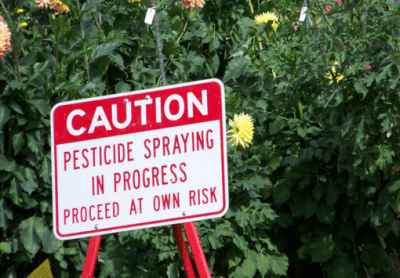Trump EPA Proposes to Scrap Protections for Children from Pesticide Linked to Birth Defects, Cancer
Plan Would Also Allow 50 Percent More Atrazine in Rivers, Streams

The Trump administration proposed today to reapprove the pesticide atrazine, an endocrine-disrupting herbicide that castrates frogs and is linked to birth defects and cancer in people. It has been banned or is being phased out in more than 35 countries.
Today’s proposal weakens safeguards for children’s health and the environment, allowing 50 percent more atrazine to end up in U.S. waterways.
“It’s absolutely shameful that while other countries are banning atrazine, the Trump administration is opening up the tap,” said Nathan Donley, a scientist with the Center for Biological Diversity. “This disgusting backward step ignores decades of research and will inflict untold damage on people, wildlife and waters across the country.”
Atrazine is the second-most-used pesticide in the United States and one of the most common pesticide contaminants in waterways and drinking-water supplies.
In allowing the continued use of atrazine, the EPA discarded safety precautions mandated under the Food Quality Protection Act that protect young children from pesticide exposures. In doing so, the agency is ignoring multiple independent epidemiological studies finding that developing embryos and young children are at a high risk of harm from this pesticide.
The EPA also reduced the protection factor it uses to convert toxicity in rat and mouse studies to levels considered safe for humans. The more permissive benchmark proposed by the Trump EPA relies solely on a model developed by the primary manufacturer of atrazine, Syngenta.
With those protections in place, atrazine uses on lawns and turf would likely have been cancelled due to unacceptable harms to children. In today’s decision, the agency is only proposing a modest reduction in application rate for turf.
“Restricting the spraying of atrazine is essential for protecting human health,” said Olga Naidenko, the Environmental Working Group’s vice president for science investigations. “Instead, the Trump EPA’s proposal would increase atrazine discharges, endangering children’s health and harming communities. Since the beginning of the Trump administration, the agency has been working overtime on behalf of chemical agriculture while acting against the interests of children’s health.”
The Trump EPA plan also weakens environmental safeguards put in place in 2006 to protect aquatic life from harmful atrazine exposure, a move that will dramatically increase the amount of atrazine allowed in waterways across the United States.
At issue is the “concentration equivalent level of concern,” or CELOC, a regulatory threshold meant to protect aquatic ecosystems from pesticide pollution. The current CELOC is a 60-day average concentration of 10 parts per billion of atrazine. The proposed action would raise that level to 15 parts per billion, nearly five times higher than the 3.4 parts per billion the EPA identified as safe in 2016. Water concentrations that exceed the CELOC in any given year are subject to mitigation measures by the pesticide companies that are meant to bring the watershed back into compliance.
Today’s proposed weakening of safeguards for atrazine comes after Jeff Sands, a former Syngenta lobbyist, was appointed a senior agricultural advisor to then-EPA administrator Scott Pruitt in October 2017. Sands received a waiver from Trump’s pledge to forbid political appointees from working on issues involving former employers or clients. Sands has since left the EPA.
*
Note to readers: please click the share buttons above or below. Forward this article to your email lists. Crosspost on your blog site, internet forums. etc.

